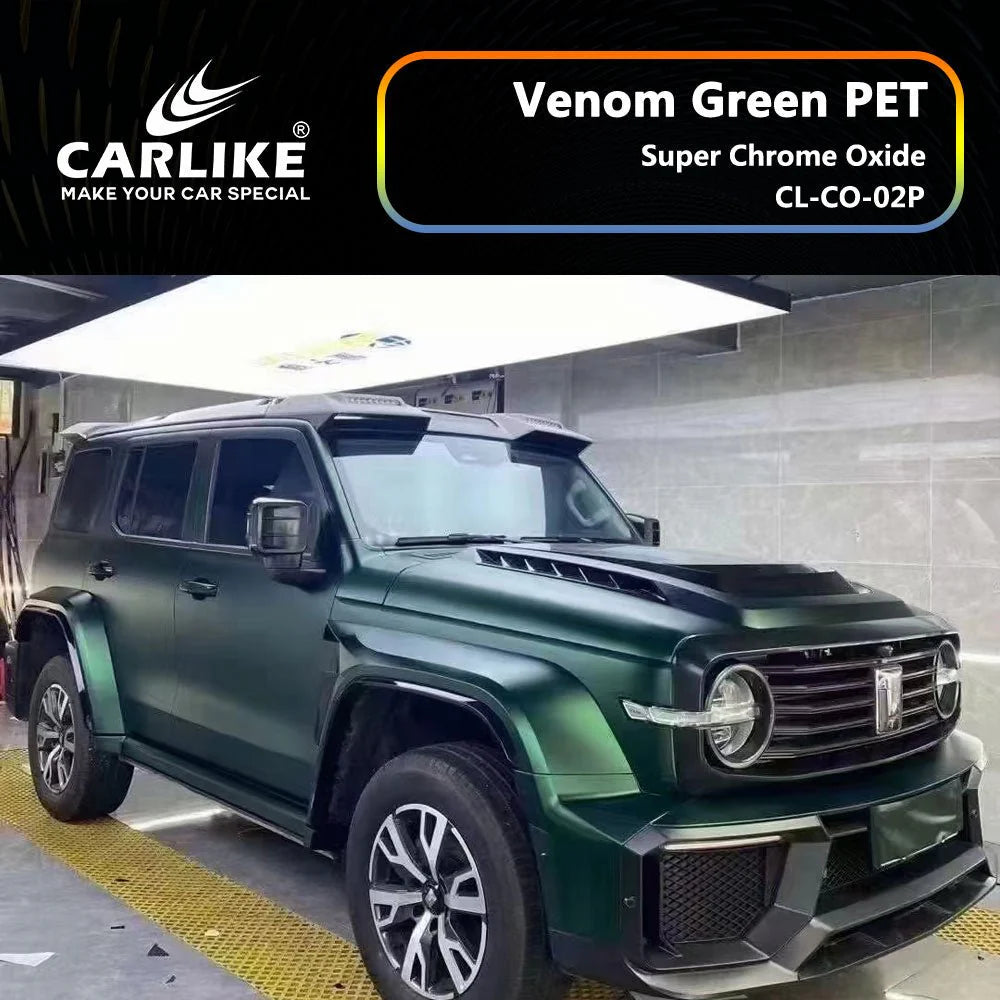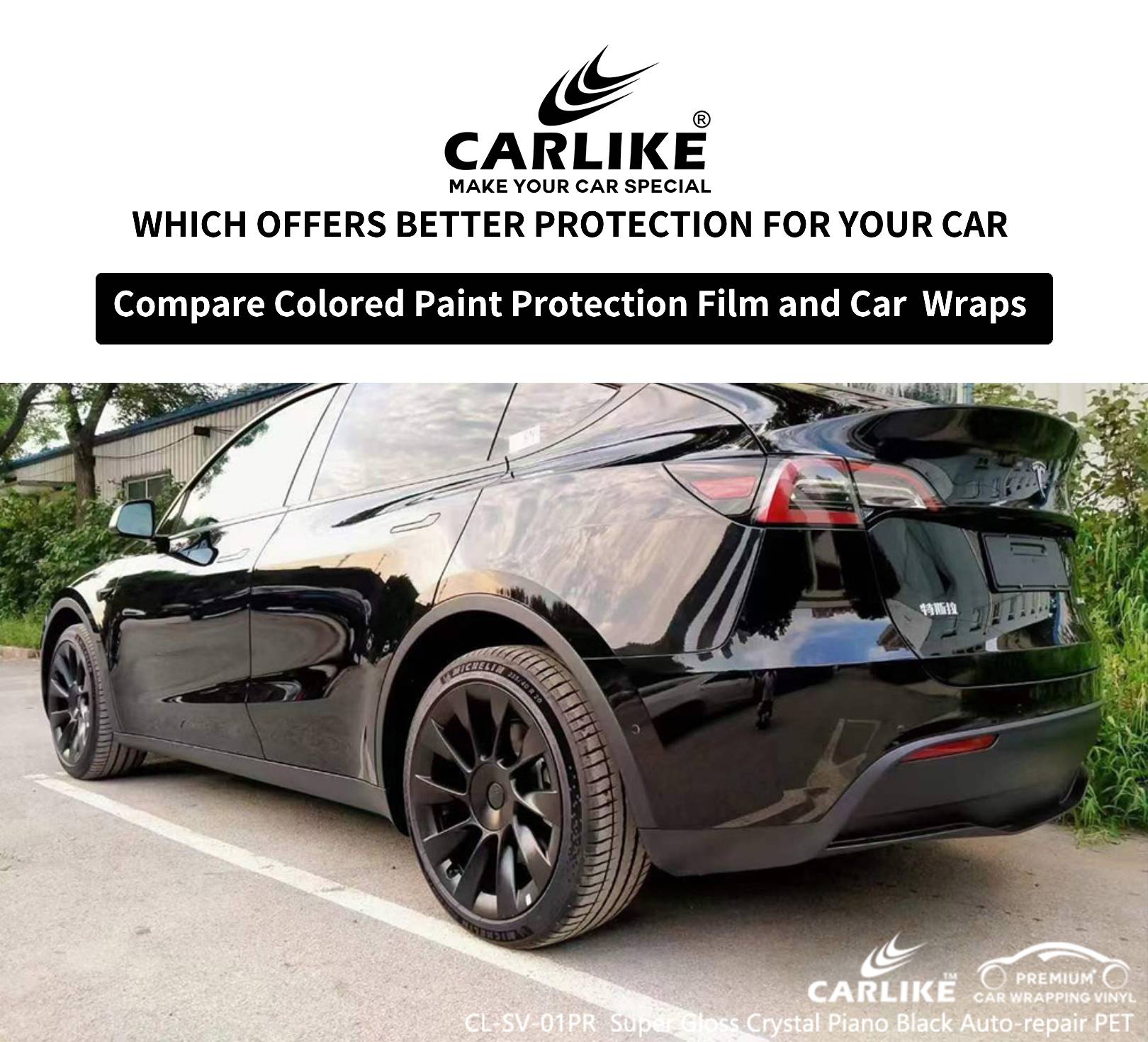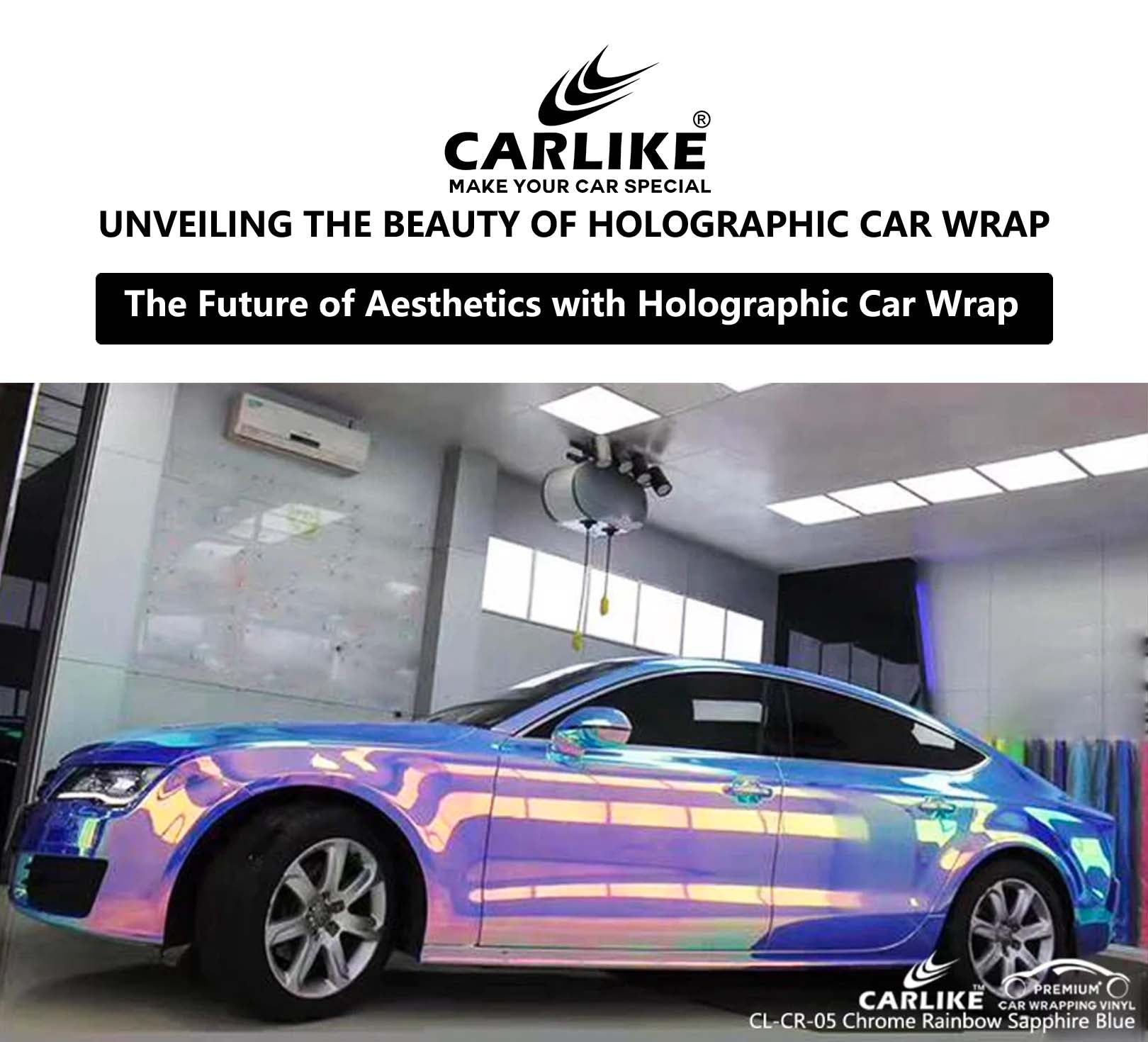CARLIKE-Make Your Car Special.

Introduction to Car Wrapping and Painting
Car Wrapping
Car wrapping involves applying a thin, adhesive vinyl film to the exterior of a vehicle to change its appearance or protect the original paint. Here are the key steps involved in the car wrapping process:
1. Surface Preparation: The car's surface is cleaned and prepared to ensure the car wrap adheres properly. Any imperfections or debris are removed.
2. Measurement and Cutting: The car wrap is measured and cut to fit the specific contours and dimensions of the vehicle.
3. Application: The car wrap is carefully applied to the car's surface using squeegees to remove air bubbles and ensure a smooth finish.
4. Trimming and Finishing: Excess vinyl car wrap is trimmed, and edges are sealed to ensure a clean and professional look.
Car Painting
Car painting involves applying a coat of paint to the vehicle's exterior to refresh its appearance, change its color, or repair damage. Here's an overview of the car painting process:
1. Surface Preparation: The car's surface is cleaned, sanded, and primed to ensure the paint adheres properly and provides a smooth finish.
2. Color Matching: The desired paint color is selected and mixed to match the vehicle's existing color or the desired new color.
3. Paint Application: Multiple coats of paint (base coat, color coat, and clear coat) are applied to achieve a durable and glossy finish. This can be done using spray guns or paint brushes, depending on the technique used.
4. Drying and Curing: The painted surface is allowed to dry and cure, which may involve baking the car in a paint booth to speed up the curing process.


Cost Comparison: Wrapping vs. Painting
1. Material Costs
Wrapping
The cost of car wraps can vary based on the quality, brand, and type of material used. Generally, a basic car wrap can range from $500 to $2,000, while premium wraps with custom designs or special finishes can cost upwards of $3,000 or more.
Painting
Quality automotive paint, clear coat, and primer can be expensive. A professional paint job using high-quality materials can range from $1,000 to $5,000 or more, depending on the complexity of the job, color choice, and labor involved.
2. Labor Costs
Wrapping
The labor cost for wrapping a car typically ranges from $500 to $2,000. This includes the labor for prepping the car's surface, applying the car wrap, and any additional customization or design work.
Painting
Professional painting requires extensive preparation, including sanding, priming, and painting. Labor costs for painting a car can range from $1,000 to $3,000 or more, depending on the complexity of the job and the labor rates of the auto body shop.
3. Customization Costs
Wrapping
Car wraps offer a wide range of customization options at a relatively low cost. Custom colors, finishes, and designs can be easily achieved with car wraps, adding anywhere from $100 to $1,000 or more to the total cost.
Painting
Custom paint jobs can significantly increase the cost due to the additional labor and materials required. Custom colors, designs, and special effects can add $500 to $3,000 or more to the painting cost.
4. Maintenance and Repair Costs
Wrapping
Maintenance for car wraps is relatively low-cost. Regular washing with mild soap and water is usually sufficient to keep the wrap looking new. Minor repairs, such as patching small tears or scratches, can be done at a fraction of the cost of repainting.
Painting
Painted surfaces require regular maintenance to prevent fading, chipping, and oxidation. Repainting or touching up areas can be expensive and time-consuming, often costing several hundred dollars or more.
Materials Used in Wrapping vs. Painting
Materials Used in Wrapping
1. Car Wraps: Car wraps are primarily made of vinyl, a flexible and durable material available in various colors, finishes, and textures.
2. Adhesive: High-quality wraps use adhesive backing to ensure the vinyl adheres smoothly to the car's surface. The type and quality of adhesive can affect the longevity and appearance of the wrap.
3. Lamination: Some car wraps come with a protective laminate layer that adds an extra level of protection against UV rays, scratches, and other environmental factors. Lamination can increase the overall cost but enhances the durability and lifespan of the car wrap.
4. Primer and Cleaning Solutions: Proper surface preparation is crucial for a successful wrap installation. Primers and cleaning solutions are used to clean and prepare the car's surface, ensuring optimal adhesion of the car wrap.
Impact on Costs
Quality of Vinyl: Premium car wraps, which offer better durability and finish, are more expensive than standard options. The choice of vinyl material significantly influences the overall cost of car wrapping.
Type of Adhesive: High-quality adhesives ensure a long-lasting bond and smooth finish but can be more expensive than cheaper alternatives. The adhesive's quality affects the car wrap's longevity and appearance.
Lamination: Adding a protective laminate layer increases the cost of the wrap but provides enhanced protection against wear and tear, prolonging the wrap's lifespan.
Materials Used in Painting
1. Primer: A primer is applied to the car's surface to enhance paint adhesion and provide a smooth base for the paint.
2. Paint: Automotive paint is available in various types, including enamel, acrylic, and urethane. Each type has different properties, such as durability, finish, and cost.
3. Clear Coat: A clear coat is applied over the base paint to protect it from UV rays, scratches, and environmental damage. It also adds depth and gloss to the paint finish.
4. Paint Thinner and Solvents: These are used to thin the paint to the desired consistency for application and to clean painting equipment.
Impact on Costs
Type of Paint: High-quality automotive paints, especially those with advanced formulations or custom colors, can be expensive compared to standard options. The choice of paint type and brand significantly impacts the overall painting cost.
Primer and Clear Coat Quality: Premium primers and clear coats offer better adhesion, durability, and protection but come at a higher cost than basic options.
Labor: Painting requires skilled labor for preparation, application, and finishing. Labor costs, including masking, sanding, and detailing, contribute significantly to the overall painting expenses.
In summary, the materials used in both wrapping and painting processes play a crucial role in determining the overall cost. While wrapping often involves the cost of vinyl, adhesive, and optional lamination, painting includes primer, paint, clear coat, and associated solvents, with labor costs being a significant factor in both processes.






